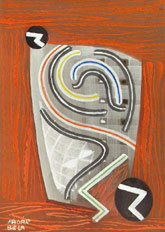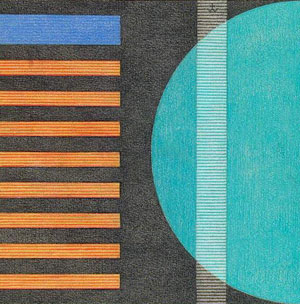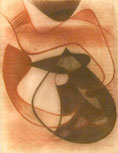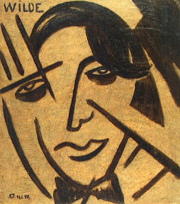
Anne BEÖTHY STEINER (1902-?)
Constructivism was an invention of the Russian avant-garde that found adherents across the continent. Germany was the site of the most Constructivist activity outside of the Soviet Union (especially as home to Walter Gropius's Bauhaus, a progressive art and design school sympathetic to the movement) but Constructivist ideas were also carried to other art centers, like Paris, London, Budapest, Wienna and eventually the United States.

Béla
KÁDÁR (1877-1956)
Hungarian Constructivist painters at Gallery 3,14 May 7th – June 4th 2002

Alfréd
FORBÁTH (1897-1972)
Among the most prominent constructivists we find artists like
| Vladimir
Tatlin Alexandra Exter Kasimir Malevich |
Alexander
Rodchenko Robert Adams Wassily Kandinsky |
El
Lissitzky Laszlo Moholy-Nagy Victor Vasarely |
 Ferenc
MARTYN (1899-1986)
Ferenc
MARTYN (1899-1986)
The international character of the movement was proven by the various
origins of its artists.
Naum Gabo, Antoine Pevsner, and El Lissitzky brought Constructivism from
the Soviet Union to the West.
Laszlo Moholy-Nagy came to Germany from Hungary,
Theo van Doesburg from the Netherlands.
Ben Nicholson was the most prominent English Constructivist.
Josef Albers and Hans Richter encountered the movement in their native
Germany but were also instrumental in its international dissemination.
Constructivist art is marked by a commitment to total abstraction and
a wholehearted acceptance of modernity. Often very geometric, it is usually
experimental, rarely emotional. Objective forms which were thought to
have universal meaning were preferred over the subjective or the individual.
The art is often very reductive as well, paring the artwork down to its
basic elements. New media were often used. Again, the context is crucial:
the Constructivists sought an art of order, which would reject the past
(the old order which had culminated in World War I) and lead to a world
of more understanding, unity, and peace. This utopian undercurrent is
often missing from more recent abstract art that might be otherwise tied
to Constructivism.
International Constructivism refers to the optimistic, abstract art that
emerged in Europe in the 1920's.

Hugó SCHEIBER (1873-1950)
In this exhibition
of Hungarian constructivist painters from the Janus Pannonius Museum in
Pecs and the Kiscelli Museum in Budapest you will find a selection of
Hungarian constructivist painters. These works have either been donated
or purchased by the respective museums, and have rarely – if ever
– been on display. They constitute an important part of Central European
heritage from the constructivist era.
The exhibition will be on display during the Bergen Arts Festival 2002
before continuing to the M.K. Ciurlionis National Museum of Art in Kaunas,
Lithuania.
The exhibition is funded by the Hungarian Ministry of Culture.

János
SCHADL (1892-1944)